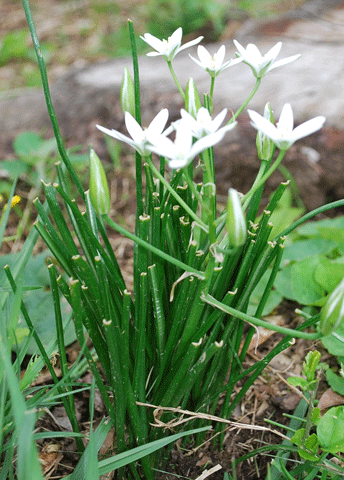
Many people landscape their homes and farms to improve the aesthetics of the property. Unfortunately, many of those attractive plants are toxic to horses. In this article from Cynthia Gaskill, DVM, PhD, clinical veterinary toxicologist at the University of Kentucky Veterinary Diagnostic Laboratory, you will learn more about some of the more common plants that can harm horses in the Kentucky region. Check with your county extension agent to learn more about toxic plants in your region.
Landscape plant choices often are based on aesthetics and hardiness. However, plant toxicity is perhaps a more important aspect to consider when using plants in places where horses are stabled. Even if trees, shrubs and flowers are planted well out of reach of pastured or stalled horses, exposure is still possible. Strong winds, storms, and flooding can carry branches and other plant materials into pastures. Horses can escape from pastures or stalls and gain unintended access to areas normally out of reach. Garden workers sometimes discard plant trimmings into pastures, unaware of how toxic some plant trimmings and debris can be. Additionally, many farms have resident dogs and cats, and visitors often bring pets with them, so companion animal exposure to farm landscaping must also be considered.
Below are some landscape plants that should be avoided on horse farms if possible. This list can be given to landscape architects and gardeners before landscaping projects are started. For those farms with established landscapes, a list of existing plants can be compared to see if removal or replacement of plants should be considered. Consult with your veterinarian or a veterinary toxicologist experienced with horse poisoning for more information on the risks associated with various garden plants and trees. The list below is intended for use in the Bluegrass region of Kentucky and surrounding areas. It is by no means all-inclusive, but includes some of the more common or important plants that could pose a toxic risk to horses and farm dogs or cats.
Trees to avoid on horse farms include: Red maple and other maples, wild cherry, black walnut, black locust, oak, Kentucky coffee tree, buckeye, golden chain tree, mimosa, persimmon, chinaberry, tung nut and cycad palms.
Shrubs to avoid include: Japanese or other yew (Taxus) bushes, privet, common box, elderberry, Carolina allspice, choke cherry, serviceberry, buckthorn, fetterbush, laurel and day-blooming Jessamine. Taxus bushes are especially toxic and ingestion of discarded Taxus hedge trimmings is a common cause of death in horses.
Flowering garden plants to avoid include: Delphinium, lily of the valley, foxglove, rhododendron and azaleas, lobelia, sweet pea, castor beans, bulbs such as autumn crocus, lilies, iris, hyacinth, amaryllis, and daffodils; poppies, morning glory, bleeding hearts, pieris, lantana, lobelia, ground cherry, angel’s trumpet, periwinkle, monkshood, harebell, hibiscus, clematis, Star of Bethlehem, bracken fern, rosary pea, baneberry, pheasant’s eye, Lords and Ladies, begonia, butterfly weed and other showy milkweeds, yesterday-today-and tomorrow, caladium, diffenbachia and philodendron species, moonflower and other Datura species, sesbania, honeysuckle, may apple and blue indigo.
Many vegetable and crop plants can also be toxic to horses and other animals if accidental exposure to these plants occurs. Crop gardens should be well fenced to prevent animal access. Garden crop plants that can be toxic include: onions, chives, garlic, shallots, rhubarb, turnips, potatoes and tomatoes (leaves and green fruits), tobacco and avocados.
Many weeds are toxic to horses and other animals. Garden weeds can pose a risk to horses if discarded into pastures. Some mulches can pose risks to animals. Avoid black walnut mulches and cocoa hull mulches in particular. Additionally, discuss risks of toxic plant exposures with neighboring property owners so they do not unintentionally poison your horses by discarding garden trimmings into your horse pastures.
This list is not all-inclusive, and it does not include important toxic plants that are not typically grown in the Bluegrass region (for example, oleander is an extremely toxic plant that causes many equine deaths in southern states, but is not typically found in Kentucky). As with other toxicants, the exposure dosage determines whether or not intoxication will occur. Consult with your veterinarian or a veterinary toxicologist to determine if your garden plant choices could pose a risk to horses or other animals.
Editor’s Note: Want to see a list of unsafe plants? Click here!


